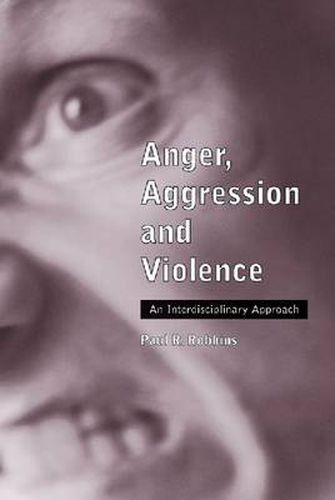Readings Newsletter
Become a Readings Member to make your shopping experience even easier.
Sign in or sign up for free!
You’re not far away from qualifying for FREE standard shipping within Australia
You’ve qualified for FREE standard shipping within Australia
The cart is loading…






This title is printed to order. This book may have been self-published. If so, we cannot guarantee the quality of the content. In the main most books will have gone through the editing process however some may not. We therefore suggest that you be aware of this before ordering this book. If in doubt check either the author or publisher’s details as we are unable to accept any returns unless they are faulty. Please contact us if you have any questions.
Violence has been a part of the human condition for a long time. Evidence from the distant past of hominids shows traces of violence inflicted by other hominids. The history of our own species has more than its share of violent encounters–sometimes rising to the level of sheer brutality. Indeed, the examples of human inhumanity are so numerous and so diverse, one might entertain the thesis that violence is hardwired, as it were, into the genetic makeup of our species.
The thesis underlying this book is that in order to better understand violence, it is important to examine anger and aggression and the interrelationship among the three concepts. Feelings of anger often precede aggressive and violent acts. If we learn how to control anger better, we can expect a reduction in violent acts. And aggression itself may be channeled into behaviors which can be useful rather than destructive. This book addresses the problem of anger by using an interdisciplinary approach, drawing on research from psychology, anthropology, sociology and history as well as statistical data provided by criminologists.
$9.00 standard shipping within Australia
FREE standard shipping within Australia for orders over $100.00
Express & International shipping calculated at checkout
Stock availability can be subject to change without notice. We recommend calling the shop or contacting our online team to check availability of low stock items. Please see our Shopping Online page for more details.
This title is printed to order. This book may have been self-published. If so, we cannot guarantee the quality of the content. In the main most books will have gone through the editing process however some may not. We therefore suggest that you be aware of this before ordering this book. If in doubt check either the author or publisher’s details as we are unable to accept any returns unless they are faulty. Please contact us if you have any questions.
Violence has been a part of the human condition for a long time. Evidence from the distant past of hominids shows traces of violence inflicted by other hominids. The history of our own species has more than its share of violent encounters–sometimes rising to the level of sheer brutality. Indeed, the examples of human inhumanity are so numerous and so diverse, one might entertain the thesis that violence is hardwired, as it were, into the genetic makeup of our species.
The thesis underlying this book is that in order to better understand violence, it is important to examine anger and aggression and the interrelationship among the three concepts. Feelings of anger often precede aggressive and violent acts. If we learn how to control anger better, we can expect a reduction in violent acts. And aggression itself may be channeled into behaviors which can be useful rather than destructive. This book addresses the problem of anger by using an interdisciplinary approach, drawing on research from psychology, anthropology, sociology and history as well as statistical data provided by criminologists.